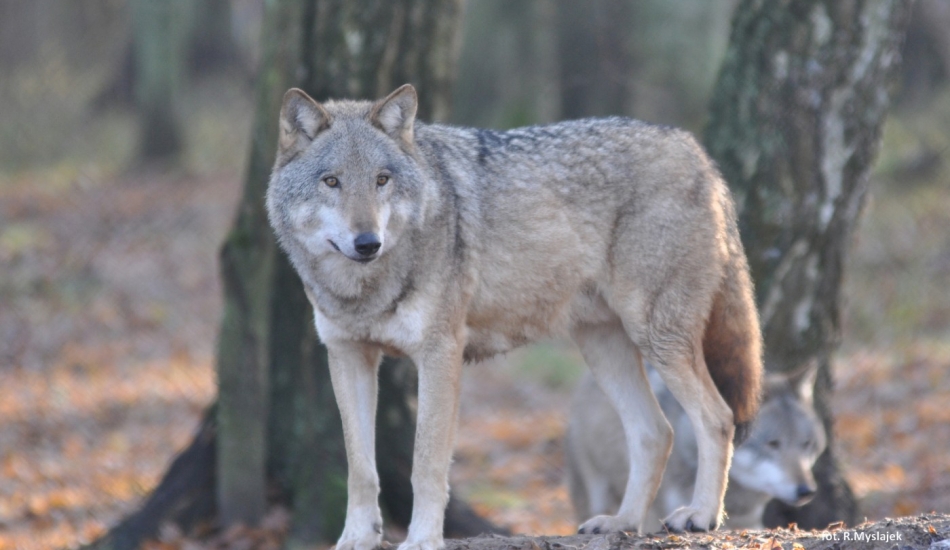
Wolf
The gray wolf or grey wolf (Canis lupus) is a canid native to the wilderness and remote areas of North America, Eurasia and North Africa. It is the largest member of its family, with males averaging 43–45kg (95–99lb) and females 36–38.5kg (79–85lb). It is similar in general appearance and proportions to a German shepherd, or sled dog, but has a larger head, narrower chest, longer legs, straighter tail, and bigger paws. Its winter fur is long and bushy, and predominantly a mottled grey in colour, although nearly pure white, red, or brown to black also occur.
Wolves in the Western Beskidy Mountains:
The western-most range of the Polish part of the Carpathian Mountains is the Western Beskidy Mountains, located near the Polish-Slovakian and the Polish-Czech border. The Polish part of the region includes three mountain ranges: the Silesian Beskid, Mały Beskid and Żywiecki Beskid Mountains (total area 2,010km2), separated by the Soła River valley. The region is densely inhabited by humans (on average, 150 people/km2). There is some agriculture and livestock farming, where small sheep and goat flocks are an important source of income. Most of the forests are exploited; only 1 per cent is protected in a small number of nature reserves. Forestry activity has increased markedly since the winter of 2004/2005. After a hurricane and dry summer which caused severe damage to local spruce monocultures, large areas of forest have been cleared and replanted. Consequently, a number of new forest roads have been built, which makes access to wildlife refuges much easier. There are a large number of weekend cabins and recreation centres along the forest peripheries, as well as many ski lifts, ski routes, and tourist paths in the forest. In the Zywiecki Mountains, the guild of large predators includes the wolf, lynx and brown bear. Two other ranges are inhabited mainly by wolves, but also visited sporadically by lynxes and bears.
Despite roe deer (Capreolus capreolus) being the dominant wild ungulate species in the region, and an abundance of livestock within the study area, wolf packs prey mainly on red deer (Cervus elaphus). On average, their diet consists of red deer (42%), followed by roe deer (33%). In both species of deer, wolves prefer killing females and juveniles more frequently than males. Wild boar (Sus scrofa) make up 4% of the food biomass, in accordance with its low share in the ungulates community. Despite the easy access of wolves to numerous unprotected sheep flocks pastured on meadows among woods, livestock constituted only 3% of the wolf food biomass. We recorded only 1 or 2 pups per pack in early winter.
